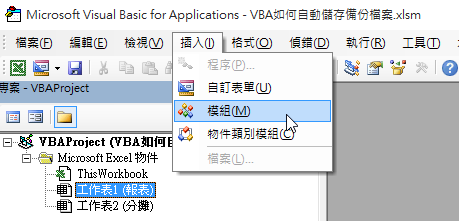

False to cancel a previously set procedure. You can set the maximum waiting time when the scheduled Procedure do not run. If a Procedure is running and prevent another scheduled Procedure to run, Excel waits until the previous Procedure is complete. The time when you want this procedure to be run. OnTime( EarliestTime, Procedure, LatestTime, Schedule) Name Syntax of Application.OnTime Method Application. You can write a Macro to auto execute Application.OnTime when Excel is opened. – run a procedure repeatedly at specific time intervalĪpplication.OnTime Method only works when Excel is opened, therefore it is best to work with Windows Task Scheduler, which can open Excel at specific time. – schedule a procedure to be run after a specific amount of time – schedule a procedure to be run at a specified time in the future You can do the followings with Excel VBA Application.OnTime Method
Vba ontime how to#
If Microsoft Excel is not in Ready mode within 30 seconds, the procedure won’t be run.This tutorial explains how to use Excel Application.OnTime Method to trigger / schedule event at specified time.Īuto Open Excel with Windows Task SchedulerĮxcel automatically refresh pivot table Excel VBA Application.OnTime Method to trigger event at specified time See VBA help:įor example, if LatestTime is set to EarliestTime + 30 and Microsoft Excel is not in Ready, Copy, Cut, or Find mode at EarliestTime because another procedure is running, Microsoft Excel will wait 30 seconds for the first procedure to complete. Well, have you tried it to find out for yourself? Nothing mysterious happens. I suggest you try it out and convince yourself. Not sure what you mean by "resetting" the timer do you mean calling OnTime with Schedule := True or Schedule := False?Įither way, how else is it supposed to know which procedure to run (or which procedure run to cancel) if you don't specify the Procedure argument? That's what it's for. The combination of EarliestTime and Procedure makes it unique.

Not sure where you read this? Not that it's a smart thing to do, but you could in principle schedule two or more OnTime runs with the same EarliestTime. If the LatestTime argument is included, what happens after that time if the timer has not been able to fire? Does Windows erase the timer completely? What happens if the call-back procedure is contained in an object that no longer exists when the timer fires? Or more generally, what happens if there is some error when the timer fires and tries to execute the call-back procedure?
Vba ontime registration#
Is the Procedure argument also included in the registration and subsequent identification process as well? My understanding is that the the timer is registered by the EarliestTime argument and that this is the "serial number" for the timer that uniquely identifies it.

What happens if the call-back function is no longer in scope for example? Is the timer still reset properly? Is this why most of the examples I've seen (including Chip Pearson - unfortunately, for some reason I'm not allowed to include the link) proceed the OnTime call with On Error Resume NextĪnd, sorry to ask again, but why is this done? It doesn't make sense to have a call-back with Schedule:=False. When resetting the timer, what is the purpose of the Procedure argument? Anyway, I have some more specific questions.
Vba ontime code#
I asked a question about this last week here I posted my code as requested but no answer.


 0 kommentar(er)
0 kommentar(er)
